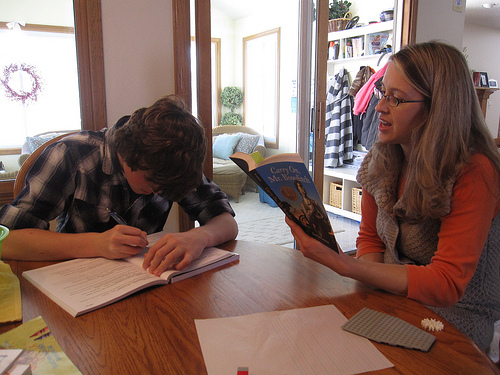The optimal education system would deposit government K-12 spending in an account for each child that parents control and can split among various offerings or save for college, according to a new report published by the Friedman Foundation for Educational Choice.
Arizona’s governor first signed education savings accounts into law for disabled students in 2011 and signed a 2012 expansion to include children attending failing schools, foster children, and military dependents. That expansion takes effect in 2013.
“ESAs turn the perspective Americans have had about education for the past 100 years on its head,” said Jonathan Butcher, education director at Arizona’s Goldwater Institute, which helped write Arizona’s ESA law.
Comparison to Vouchers
ESAs expand upon the original voucher concept. Approximately 212,000 children are eligible for vouchers in 2012, and 700,000 or more will be in 2013, according to the foundation and School Reform News estimates.
Funding students directly and giving families both choice and power is the best way to save critical taxpayer dollars and create a custom education for every child, concludes “The Way of the Future: Education Savings Accounts for Every American Family,” authored by Matthew Ladner.
“School vouchers allow children to transfer between participating public and private schools, and take the form of a coupon,” Ladner said. He noted parents can use ESAs to pay for private school tuition, online classes, tutors, college courses, and future higher-education expenses.
ESAs represent education’s new direction, says Butcher: “not ‘where’ a child is educated but ‘how.'” Ladner said he expects voucher programs to take the shape of ESAs in the future.
“Just as the first generation of cell phones started as something that could do one thing [and transformed] into iPhones that could do many things, voucher and tax credit programs will evolve into ESA programs,” he said
How ESAs Work
Arizona parents who choose an ESA sign an agreement that they will provide their child an education in reading, grammar, science, math, and social studies. Parents then receive 90 percent of state per-pupil education funding for their child in a savings account and are issued a debit card that allows them to access the funds for the purposes the law specifies.
“Americans use debit cards to shop for health care, cars, food, you name it,” said Jeff Reed, a Friedman Foundation spokesman. “ESAs’ unique use-restricted debit card gives parents that same ability in education.”
In 2013, approximately 20 percent of Arizona public school students will be eligible for an ESA, according to the Goldwater Institute. Seventy-five students first participated in 2011, and now 400 do.
The Arizona School Boards Association and Arizona Education Association, a union—what Ladner calls ‘the usual suspects”—have sued to stop the program. In January, a judge upheld it, and the plaintiffs have appealed. Ladner said he expects the program to “grow steadily once the courts settle the case.”
Savings and Innovation
Besides allowing families maximum flexibility to shape their child’s education, ESAs “create powerful incentives for innovation,” the report states.
“Whereas education bureaucrats liberally spend dollars that aren’t theirs, ESAs incent parents to be judicious with their children’s public education funds, as those dollars can be saved for higher education,” explains Reed. “That will bring much-needed cost control to education.”
Ladner says the incentive for parents to “judge education provider by quality and cost” is the “key difference with ESAs and the reason they set the stage for innovation.”
Most importantly, ESAs boost parental involvement and open more possibilities to students, he said.
“Nothing will get parents more involved than giving them full control over the education of their child down to the last penny,” said Ladner. “Properly designed ESA programs will open a world of opportunity for disadvantaged children, giving them the opportunity to thrive in a customized education designed to meet their individual needs. In addition, the opportunity to save for higher education expenses will be a game-changer for many families.”
Learn more:
“The Way of the Future: Education Savings Accounts for Every American Family,” Friedman Foundation for Educational Choice, September 2012: www.edchoice.org/ESAs
Image by IowaPolitics.




